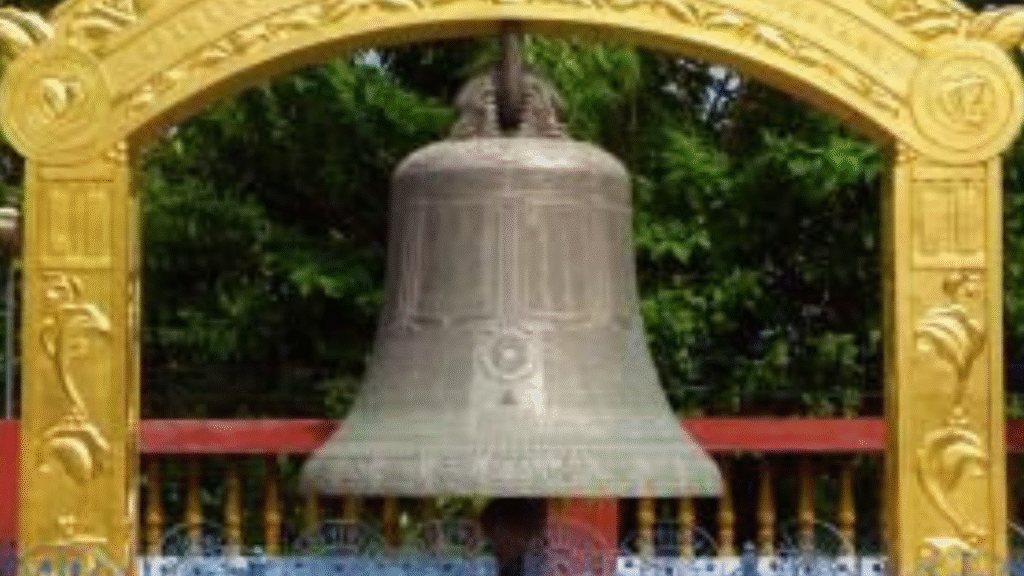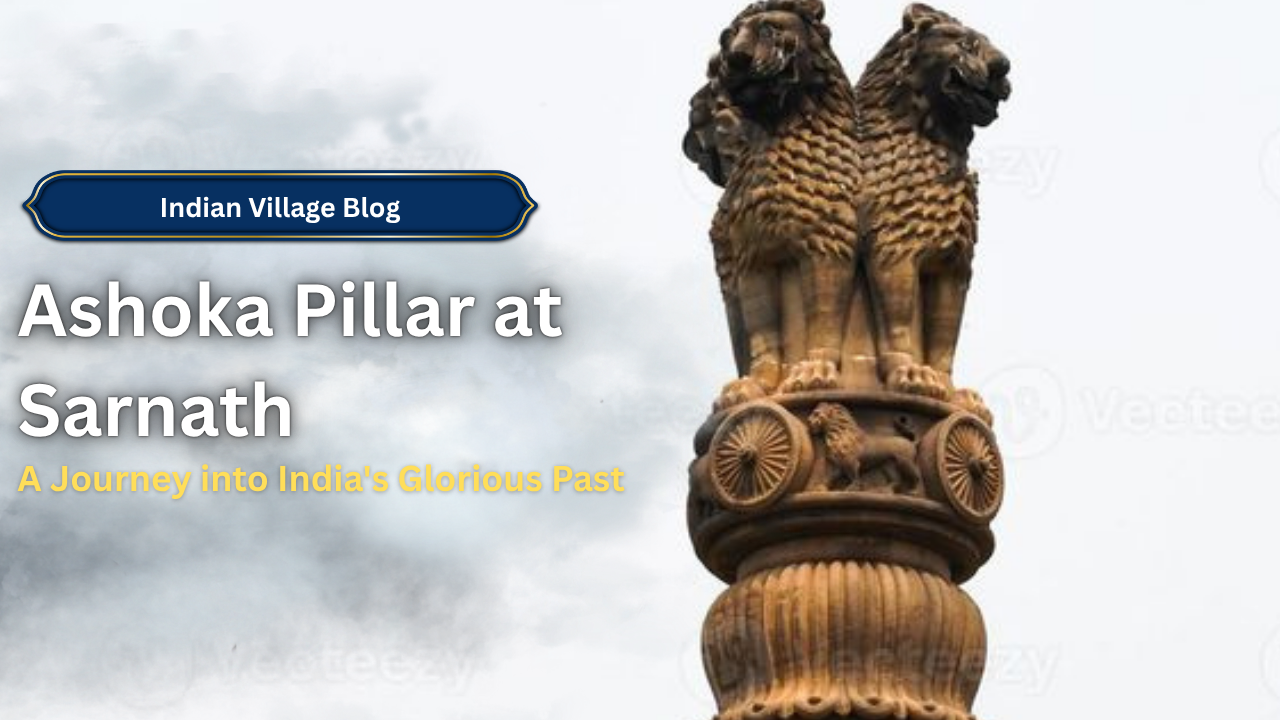My Journey to Sarnath: Meeting History Face-to-Face
I remember the first time I studied almost Sovereign Ashoka and his change after the Kalinga War. It struck a chord in my heart. A furious warrior turned into a serene ruler committed to Dharma — such stories remain with you. So, when I arranged my visit to Varanasi. I knew I couldn’t take off without seeing the Ashoka Pillar at Sarnath.
Walking into Sarnath was like stepping through a doorway into ancient history. Just 10 kilometers from Varanasi the arrive is peaceful, sacred and filled with echoes of old India. And at the heart of this unquestionable town stands the Ashoka Column — tall, quiet and stately.

What is the Ashoka Pillar at Sarnath?
The Ashoka pillar at Sarnath isn’t fair a stone landmark. It may be a image of India’s deep-rooted social and otherworldly history. Built by Head Ashoka around 3rd century BCE and after he grasped Buddhism. This pillar marked Sarnath as the put where Ruler Buddha gave his to begin with sermon after enlightenment — known as Dharmachakra Pravartana.
Standing initially at over 15 meters tall this column was carved out of a single piece of cleaned sandstone and topped with a magnificent capital — four lions standing back-to-back. In the event that that sounds recognizable it’s since this very Lion Capital of Ashoka is presently our National Symbol of India.
Where Exactly Is the Ashoka Pillar Located?
The Ashoka Column is found interior the Sarnath Archeological Area. The Archaeological Survey of India (ASI) is responsible for preserving and overseeing the site’s upkeep. The column itself is housed within the Sarnath Archaeological Museum just a short walk from the Dhamek Stupa.
Google Map :-
Here’s a fast direct:
- Area: Sarnath in Uttar Pradesh, India
- Museum Timings: 9:00 AM to 5:00 PM (Closed on Fridays)
- Entry Charge: ₹30 for Indians and ₹500 for outsiders
Best Time to Visit: October to Walk
The Lion Capital: India’s National Emblem
Standing before the original Lion Capital of Ashoka. I was amazed at its craftsmanship. Four lions confront four bearings — an image of power, strength and certainty. Below them you’ll see the chakra (wheel) and creatures — an elephant, a horse, a bull and a lion — each symbolizing diverse stages of Buddha’s life and spiritual journey.
This wasn’t fair a monument. It was an otherworldly and political message carved in stone — one that continues to rouse a country.

A Brief History of Ashoka and His Pillars
Ashoka was not always the peaceful ruler we know him as nowadays. After seeing the frightfulness of the Kalinga War. He converted to Buddhism and chosen to spread its message of peace and non-violence.
To share his beliefs and he raised edicts and columns over the Indian subcontinent. These engravings were composed in Brahmi script and included ethical teachings, governance advice and social values.
Out of the many Ashokan columns. As it were 19 still survive and the one in Sarnath is arguably the most popular and best preserved.
What Does the Ashoka Pillar at Sarnath Say?
The engravings on the column still talk to those who tune in. Written in Prakrit language and Brahmi script the edicts talk about:
Spreading Dharma (righteousness)
- Respect for elders
- Compassion toward animals
- Non-violence
- Religious tolerance
Even though centuries have passed. These messages feel inconceivably relevant even today.
My Experience at the Site
I visited the Sarnath ruins early in the morning. The winter mist made the scene indeed more enchanted. The Dhamek Stupa lingered within the distance and I may almost hear the chants of monks.
Strolling through the exhibition hall. Standing before the Ashoka Lion Capital left me speechless — the moment carried an almost spiritual stillness. This wasn’t just history — this was our history.
Exterior the museum. I walked through manicured gardens filled with old ruins, cloister dividers and the foundations of temples from over 2000 years back. It felt strange.

Fascinating Insights About the Ashoka Pillar in Sarnath
- Here are a few lesser known but fascinating facts:
- The four lions were accepted to be images of Buddha’s lessons spreading in all bearings.
- Ashoka chose Sarnath as one of the primary locales for a column since of its otherworldly significance.
- No mortar was utilized in building the column — it was a single square of sandstone.
- The clean on the stone still sparkles indeed after 2000 a long time — a declaration to the aptitudes of Mauryan stone workers.
- UNESCO Status: While Sarnath hasn’t been included in the UNESCO World Heritage list yet… Endeavors are being made to secure its put due to its importance.
How to Reach Sarnath
Getting to Sarnath is simple on the off chance that you’re as of now in Varanasi. Here are your choices:
- By Air: You can reach the site via Lal Bahadur Shastri International Airport in Varanasi located about 25 km from Sarnath.
- By Train: You can reach Sarnath easily via its own railway station, or travel through Varanasi Junction just 10 km away.
- By Road: Taxis, autos and buses from Varanasi take around 30-40 minutes
Nearby Attractions and What to Do
Apart from the Ashoka Column here are a few places you must visit in Sarnath:
- Dhamek Stupa – the sacred site where Lord Buddha delivered his first sermon after enlightenment
- Sarnath Exhibition Hall – houses antiquated relics counting the Lion Capital
- Mulagandha Kuti Vihar – a modern Buddhist sanctuary with excellent frescoes
- Chaukhandi Stupa – marks the put where Buddha met his to begin with devotees
Don’t forget to try a few local road food and buy handmade Buddhist artifacts sold by local people close the sanctuary complex.

Why You Should Visit the Ashoka Pillar at Sarnath
In today’s ever-rushing life, Sarnath gives you a rare moment to pause, breathe and reflect in peace. The Ashoka Column at Sarnath isn’t fair a verifiable object—it’s a living image of peace, solidarity, and ethical quality.
Whether you are a history darling, a spiritual seeker or fair a curious traveler. This put will leave a enduring impression on your soul. It certainly did on mine.
Final Thoughts
As I left the museum and I looked back at the Lion Capital one final time. It wasn’t roaring loudly. But its message was clear — control ought to always walk hand-in-hand with peace and nobility.
If you’re ever in Varanasi don’t miss the chance to visit the Ashoka Column at Sarnath. It’s more than a monument — it’s a portal to India’s timeless wisdom.
So, pack your packs charge your camera and get prepared to encounter one of India’s most important chronicled treasures!
Visit Offical site of VARANASI : Sarnath

